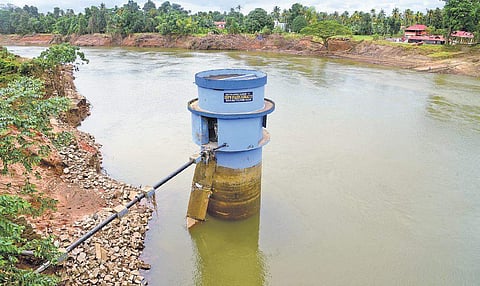

THIRUVANANTHAPURAM: Perhaps, there is nothing more frightening than a drought which, with insidious intent, begins to make its presence felt as early as January in a state like Kerala. In 2017, that was very much the state of affairs when water levels in rivers and reservoirs began plummeting ominously well before summer. By March that year, much of the state was in the sweltering vice of summer drought.
Cut to the present - September 2018 - and you have the same geographical region struggling to come to terms with the disturbing aftermath of the biggest floods since 1924. Ironical? As the LDF Government oozes enthusiasm about post-flood ‘reconstruction’, it is becoming increasingly clear that any such enterprise - however much grandiose it may sound - cannot ignore one critical element; the effects of climate change and the kind of swinging weather conditions that Kerala has hitherto never experienced. This is also the biggest challenge the state will face in the coming months, say experts.
“The rebuilding process should be based on an intimate understanding of the local conditions and what the people want. It should not be based on what the experts want,” says Madhav Gadgil, head of the Western Ghats Ecology Expert Panel (WGEEP), whose recommendations are once again a hotly debated topic in the wake of the mid-August floods.
“You can’t import a development perspective from the Netherlands. It’s very inappropriate,’’ emphasises Gadgil, making a pointed reference to the government’s hiring of the Netherlands-based KPMG as consultants for the reconstruction.Post floods, the ecologist had denounced the calamity as a man-made one. But he is also quick to draw attention to scientist-speak that extreme weather-related events are here to stay. In such a grim scenario, any reconstruction plan should have a long-term perspective that has its feet solidly planted on the ground, says Gadgil.
“It should be done with a proper knowledge of the ground realities and by taking the people fully into confidence, especially in matters of ecological fragility. For example, Athirapally (the controversial 163 MW hydel project) has clearly become indefensible in every way,” Gadgil says.Flood-ravaged Kerala should not ignore the impacts of climate change in its efforts at rebuilding, says Muralee Thummarukudy, chief of Disaster Risk Reduction in the UN Environment Programme.
“Only a reconstruction plan viewed through the lens of climate change can be sustainable,” he says. “The plan should also have a perspective that spans 50 to 100 years. Climate change is a reality. Only an ecosystem-based reconstruction and climate change-based policies can lead to a sustainable and resilient Kerala.”
He calls for properly executed land-use plans and construction techniques that are alert to the vulnerabilities of a region, but points to the stupidity of rebuilding in exactly the same manner again. The world is changing, with climate change getting accepted increasingly as a grim reality. Thummarukudy cites the example of the ‘Room for the River’ policy now adopted by the Netherlands to manage rising water levels. ‘’We used to hear about the Dutch building dykes to keep water at bay. But their development policy now is ‘Make Space for Water’,’’ he says.Minimal stress on resources is key to sustainable survival, points out Gadgil.